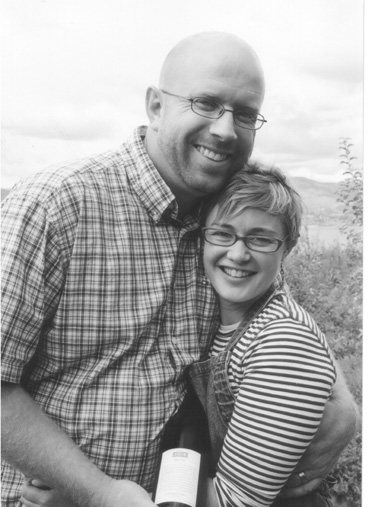It seems improbable that anyone would start a new Okanagan winery on the Naramata Bench with a business plan as unconventional as that of Joie Wines and Farm Cooking School.

It seems improbable that anyone would start a new Okanagan winery on the Naramata Bench with a business plan as unconventional as that of Joie Wines and
The unofficial Naramata sub-appellation has a rising reputation for its red wines but the owners of Joie, Michael Dinn and Heidi Noble, went with highly personal preferences when they launched last year with two whites and a rosé.
The 800 cases released from the 2004 vintage was sold in a matter of weeks. They bumped their 2005 production to 2,500 cases, released them in March and will soon be sold out again. Not bad for an eccentric business plan!
Anyone with money can open a winery. Dinn and Noble, short on cash but long on passion, found a fresh and original path into the wine business. A study of their approach commends itself to all new entrants in similar financial circumstances.
Thinking out of the box reflects the background of this couple. Dinn was born in
Noble was born in
At that point, the passion for food really kicked in. She took a two-year culinary course at the renowned Stratford Chef's School, worked in Toronto and Montreal restaurants and then moved to Vancouver, first to one of Umberto's kitchens and then to run the kitchen at Meinhardt Fine Foods for a year.
"It was at that point where I had had enough," she recalls. "I was 25 and I had been cooking since I was 14." So Noble switched to wine, enrolling in a sommelier's program in 2000. That was where she met Dinn, who had taken the course the previous year.
Dinn had worked in restaurants while in college and, after a postgraduate European tour, began working in top
First, they augmented their education in wine by spending almost four years working for competing
"We are not coming into this with millions," Dinn says. "We are trying to do this in a smart way, so we are not too beholden to the banks."
First, they delayed planting grapes for several years and chose to buy grapes. Secondly, they have delayed building a winery at least until next year, arranging to make their wines at Poplar Grove in 2004, and at the Pentâge winery last fall. They also sell their wines under those licenses.
Given the shortage of grapes in the booming Okanagan, it might seem risky to rely on purchased grapes. However, Dinn and Noble's wine strategy includes some varieties, such as Ehrenfelser, Kerner and Auxerrois, in which few competing wineries are very interested.
In its first two releases, Joie has offered only three wines: an unoaked Chardonnay; a fruity white blend inspired by
"We should state outright that our focus is to work strictly with aromatic white varietals and rosé," Dinn explains. "Those varieties grew so well here. Those were what was planted when the vinifera revolution started here in the mid-70s."
Their unconventional strategy is backed up by distinctive winemaking. Take, for example, the 2005 Chardonnay (which Dinn considers their "most improved" wine). The wine is a blend of several clones; 40% from an aromatic clone called Chardonnay Musqué. They gave the fruit and the aromatics of this wine an additional lift by blending in 10% Pinot Blanc that had been touched with botrytis. This is winemaking of a high art, resulting in a tropical tour de force with sultry sex appeal. Some 450 cases were made.
A Noble Blend (980 cases) incorporates seven varieties: Gewürztraminer, Riesling, Pinot Blanc, Kerner,
Pinot Noir Rosé has been mildly controversial. The 2005 is slightly drier than the previous vintage. The feedback is that half of Joie's fan preferred the 2004 with eight grams of residual sugar and the other half like the 2005 with six grams - even if the difference is hardly perceptible.
At least consumers are talking about the rosé. That alone is an accomplishment. "Rosé is the great disrespected wine of the entire world," Dinn argues. "We take it very seriously. It is such a food friendly wine. Nine times out of 10, rosé will be somewhere between good and amazing [in food pairings]."
In 2004 Joie cautiously made only 140 cases of rosé, only to have customers clamouring for an allocation from the 2005 vintage, when 1,050 cases were made. Controversial or not, the 2005 wine was sold out in about six weeks.
Consumers who cannot find Joie wines in private wine stores are likely to see them on many top restaurant wine lists. Their years on the
John Schreiner is author of The Wineries of British Columbia.
 quicksearch
quicksearch





